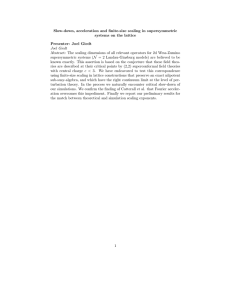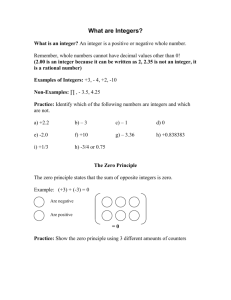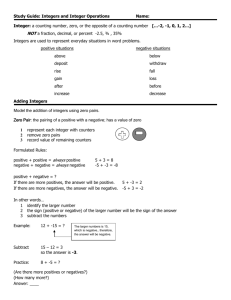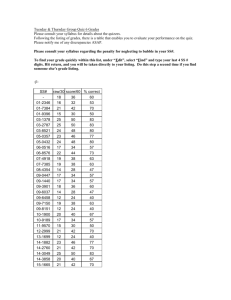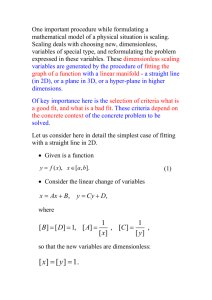Chapter 2
advertisement
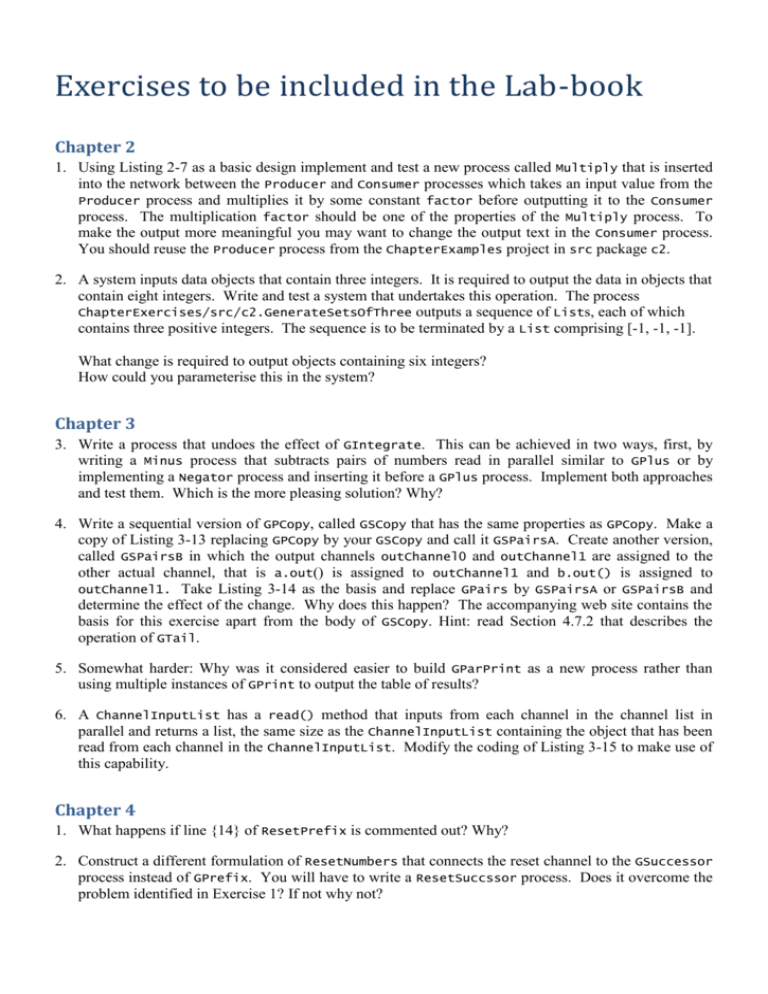
Exercises to be included in the Lab-book
Chapter 2
1. Using Listing 2-7 as a basic design implement and test a new process called Multiply that is inserted
into the network between the Producer and Consumer processes which takes an input value from the
Producer process and multiplies it by some constant factor before outputting it to the Consumer
process. The multiplication factor should be one of the properties of the Multiply process. To
make the output more meaningful you may want to change the output text in the Consumer process.
You should reuse the Producer process from the ChapterExamples project in src package c2.
2. A system inputs data objects that contain three integers. It is required to output the data in objects that
contain eight integers. Write and test a system that undertakes this operation. The process
ChapterExercises/src/c2.GenerateSetsOfThree outputs a sequence of Lists, each of which
contains three positive integers. The sequence is to be terminated by a List comprising [-1, -1, -1].
What change is required to output objects containing six integers?
How could you parameterise this in the system?
Chapter 3
3. Write a process that undoes the effect of GIntegrate. This can be achieved in two ways, first, by
writing a Minus process that subtracts pairs of numbers read in parallel similar to GPlus or by
implementing a Negator process and inserting it before a GPlus process. Implement both approaches
and test them. Which is the more pleasing solution? Why?
4. Write a sequential version of GPCopy, called GSCopy that has the same properties as GPCopy. Make a
copy of Listing 3-13 replacing GPCopy by your GSCopy and call it GSPairsA. Create another version,
called GSPairsB in which the output channels outChannel0 and outChannel1 are assigned to the
other actual channel, that is a.out() is assigned to outChannel1 and b.out() is assigned to
outChannel1. Take Listing 3-14 as the basis and replace GPairs by GSPairsA or GSPairsB and
determine the effect of the change. Why does this happen? The accompanying web site contains the
basis for this exercise apart from the body of GSCopy. Hint: read Section 4.7.2 that describes the
operation of GTail.
5. Somewhat harder: Why was it considered easier to build GParPrint as a new process rather than
using multiple instances of GPrint to output the table of results?
6. A ChannelInputList has a read() method that inputs from each channel in the channel list in
parallel and returns a list, the same size as the ChannelInputList containing the object that has been
read from each channel in the ChannelInputList. Modify the coding of Listing 3-15 to make use of
this capability.
Chapter 4
1. What happens if line {14} of ResetPrefix is commented out? Why?
2. Construct a different formulation of ResetNumbers that connects the reset channel to the GSuccessor
process instead of GPrefix. You will have to write a ResetSuccssor process. Does it overcome the
problem identified in Exercise 1? If not why not?
Chapter 5
1. The accompanying web site contains a script, called TestQ, in package ChapterExercises/src/c5
to run the queue network. The delays associated with QProducer and QConsumer can be modified.
By varying the delay times demonstrate that the system works in the manner expected. Correct
operation can be determined by the QConsumer process outputting the messages “QConsumer has
read 1” to “QConsumer has read 50” in sequence. What do you conclude from these
experiments?
2. Reformulate the scaling device so that it uses pre-conditions rather than nested alternatives. Which is
the more elegant formulation? Why?
Chapter 6
1. Construct a Test Case for the Three-To-Eight system constructed in the exercise for Chapter 2.
Chapter 7
2. By placing print statements in the coding for the Server and Client processes see if you can determine
the precise nature of the deadlock in the Client Server system. You will probably find it useful to add
a property to the Server process by which you can identify each Server.
3. When you have found this out try the same modification to the working version of the system. What
happens? Why? What are the implications of this discovery?
Chapter 8
1. Modify the Client process c7.Client so that it can ensure that the values returned from the Server
arrive in the order expected according to their selectList property. It should print a suitable
message that the test has been undertaken and whether it passed or failed. You are not to use the
GroovyTestCase mechanism because this would require that the CSMux and Server processes would
have to terminate, which would require a lot of unnecessary programming.
Chapter 11
1. The Control process in the Scaling system currently updates the scaling factor according to an
automatic system. Replace this with a user interface that issues the suspend communication, obtains
the current scaling factor and then asks the user for the new scaling factor that is then injected into the
Scaler.
Please note that the version in the hand outs included a final sentence that has been removed.
Assessment
The robot control assessment is also required to be submitted as explained on that sheet.



